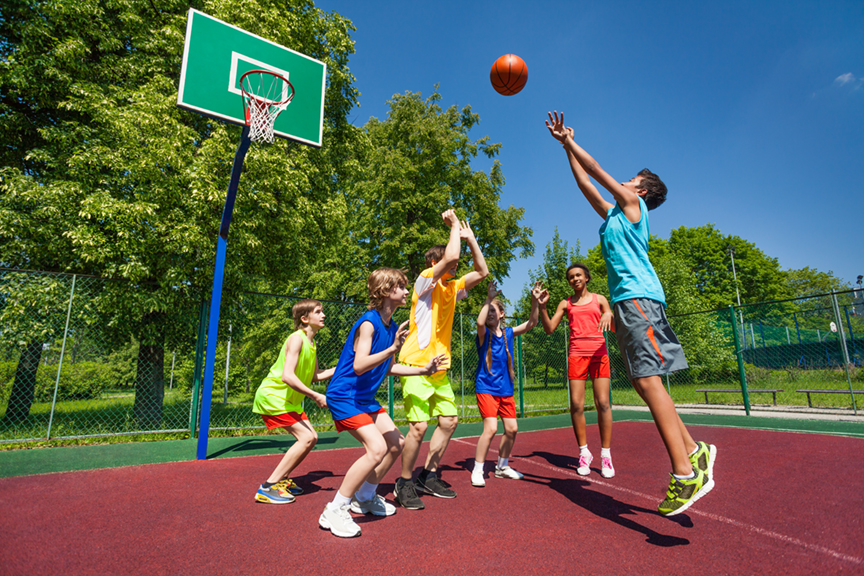
How can we empower and engage learners to own the game, create community, and meaningfully include all learners in sports?
As a Middle Years physical education teacher began a new unit focused on basketball, learners anchored themself with the question, “How will this help learners to develop the skills, value, and enjoyment of physical activity for life?” Prior to this, learners participated in basketball-specific skills and low-organized games focusing on the offensive and defensive strategies of territory games using the Teaching Games for Understanding model. This time around, this educator wanted to try a new approach. The restructured basketball unit would be grounded in learner voice, collaboration, and communication, so that the learning experience could build on learners’ unique abilities, interests, and goals.
After learning about all the roles involved in the basketball focus (captain, coach, trainer, cheer starter, scorekeeper, equipment manager, and referee), learners then had the opportunity to select their top three choices based on personal interest. When they were divided into four random groups, they were given roles based on their preference.
Building community and connection was the focus at the season opener (first class). Teams were tasked with co-creating a creative and meaningful name for their team and a team cheer/chant, and with taking a team selfie. To encourage motivation and citizenship, the cheer starter created a list of words/expressions the team members could use to cheer each other on throughout the season (unit).
Each class, learners met with their teams in one of four quadrants of the gymnasium. Team captains began with a huddle to communicate the plan for the class period. Trainers and coaches collaborated with the equipment managers to co-design, set up, and facilitate a workout for the day and to play basketball-related drills or warm-up games until the tournament games began. When the games began, the scorekeeper and referees from each team took turns so that they fulfilled their roles and played in the game. Meanwhile, coaches and cheer starters kept their teams motivated by cheering and giving feedback and suggestions for improvement throughout the game.
The teacher took on a facilitative role, supporting as needed, and ran mini-lessons for specific roles (captain, coach, trainer, cheer starter, scorekeeper, equipment manager, and referee) to take part in. For example, when issues or disagreements arose, the teacher modelled for coaches or referees how to navigate and support players’ accepting others’ perspectives and how to consult with each other to resolve ongoing issues. With cheer starters, a mini-lesson or strategy-planning session helped them focus on how to keep energy levels up or support players in turning things around when they are feeling frustrated.
At the end of the tournament, learners reflected individually and as a team on collaboration and communication. This was an important part of the season, as they identified and discussed areas of success and goals for improvement that were directly connected to the main goal of learners having the skills to manage their own play and physical activity.
Ontario Physical and Health Education Association (Ophea). Teaching Games for Understanding (TGfU) Approach. Ophea, 2024.
Durden-Myers, Liz. “Sport Education Explained.” PE Scholar, 2019.